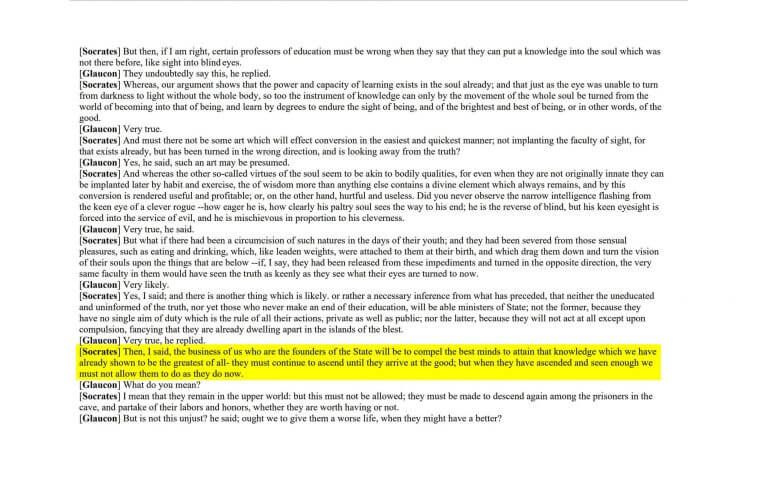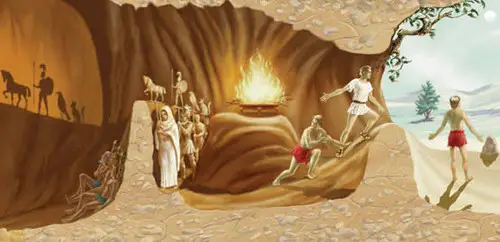
This line is divided into two parts: the intelligible realm or world of the forms, and the visible realm or the world of appearances.

Plato's ontological and epistemological view of the universe can be described using a visual metaphor known as the divided line. This is like the criticism Socrates experienced which he had to endure, ultimately leading to his death via execution. However, those that have not experienced this and have not developed a new way of thinking will criticise the individuals who have. This supports Plato's theory of Forms because it shows that an escaped prisoner can understand reality, much like we as individuals can understand our world if we continue to pursue philosophical knowledge. However, upon return, the escaped prisoner is greeted with persecution by the remaining prisoners as being idiotic or speaking nonsense, this was emphasised by the fact that the escaped prisoner had difficulty adjusting to the darkness, this is a metaphor as to when truth has been found, it is difficult to go back to old ways of thinking. Once the prisoner has adapted to the outside world they return, with the knowledge they have gathered with the goal of educating the other prisoners. Whilst in the outside world, the prisoner gets blinded by the sun, the highest of all forms and is also the form of good as it makes things visible. When a prisoner leaves the cave, they will see true reality in the form of the outside world and so have sought true knowledge – this is a metaphor for a philosopher which has access to knowledge. These prisoners would perceive these shadows to be real, and in order to truly understand the shadows, one must escape and make the journey out of the cave. The casted shadows and noises and echoes are coming from objects which they cannot see.


Behind the prisoners is a walkway where puppeteers hold up puppets to cast shadows on the cave wall. All they can see is a wall in front of them which is lit by a fire which burns behind them. In the allegory, the theory of forms is represented by prisoners chained in a cave, unable to turn their heads, subsequently meaning that they have not experienced anything beforehand. This is a narrated conversation between Plato's teacher Socrates and his brother, Glaucon. To explain this theory in more depth, Plato hypothesised the ‘Allegory of the cave' story. These are in a hierarchal form, which includes the ‘good' (the highest form), ‘higher forms', ‘lower forms', material objects and images. There are many other forms which exist alongside beauty. Therefore, it has been proposed that we recollect things and apply them to the finite world. Plato also proposed that the recognition of the forms such as beauty in the finite world occurs because our souls have been to the infinite world before we are born into the finite world, this is also known as anamnesis. Essentially, the finite world aspires to reproduce the perfect infinite world. An example of this may be in the form of beauty, which could be reflected in the finite world as a flower. In contrast, the infinite world is one which consists of all the perfect forms that exist, through reflections that are projected into the finite world. Plato proposed that the finite world is one in which we reside, which is imperfect. Read through it and compare the two texts presented.Within this theory, Plato conveyed the idea of two worlds, the finite world and the infinite world. Interested in comparing Plato’s Allegory of the Cave to a real-life issue such as alcohol and addiction? Visit the New York Times Learning Network Text to Text and follow the lesson. Even if none of that interests you, chances are you’ve already seen the Allegory of the Cave interpreted as a major blockbuster film. You may also want to read a summary of the Theory of Forms and how it relates to language. How does the visual representation give you a different perspective from reading the Allegory of the Cave? Want to see two different visual representations of this allegory? Watch this version of Plato’s allegory in clay animation or this one narrated by Orson Welles! Each is a bit different, but provide a unique representation of Plato’s allegory.

To better understand the allegory’s larger context, try reading the rest of The Republic by Plato and these classic lectures. Want to read the Allegory of the Cave in its complete format? Go to this site and get started.


 0 kommentar(er)
0 kommentar(er)
